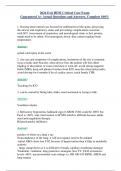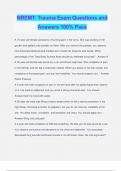Essay
Samenvatting PMAN | 8,1 gehaald! | Human Resource Management boek (H1,2,3,4,5,7,8,9,10,11,12,13,14,16,17)
- Instelling
- Hogeschool Tio (Tio)
Samenvatting voor het tentamen van PMAN Human Resource Management. Ik heb H1,2,3,4,5,7,8,9,10,11,12,13,14,16 en 17 van het boek Managing Human Resources samengevat. Managing Human Resources Auteur: Luis Gomez-Mejia David B. Balkin Engelstalig 660 pagina's
[Meer zien]














